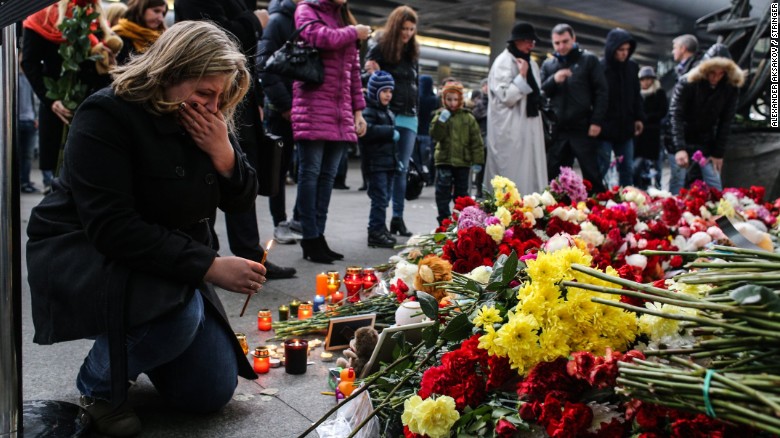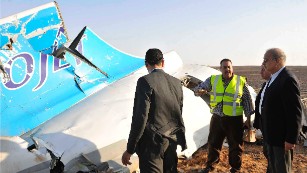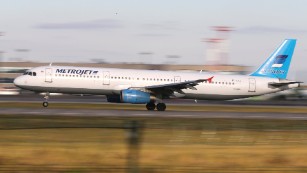Russian plane crash in Egypt: It's too early to determine cause, officials say
How close are authorities to pinpointing what caused a Russian passenger jet to break up in midair and crash in Egypt's Sinai Peninsula?
That depends whom you ask.
The airline says technical faults or human errors couldn't have caused Metrojet Flight 9268 to crash.
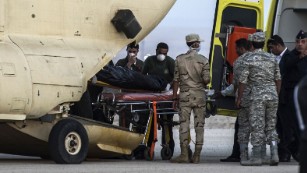
Russian plane crashes in Egypt


But Russian officials say it's too soon to tell what made the passenger jet plunge to the ground Saturday, killing all 224 people on board.
Experts agree it's too early to know for certain, and officials have downplayed an apparent claim by Islamic militants that they brought down the Airbus A321-200, saying technical failure is the most likely reason for the crash.
Here's what we know so far:
THE FLIGHT
Flight 9268 was on its way from the Egyptian resort of Sharm el-Sheikh to St. Petersburg early Saturday when it dropped off radar about 23 minutes into the flight, Egyptian officials say.
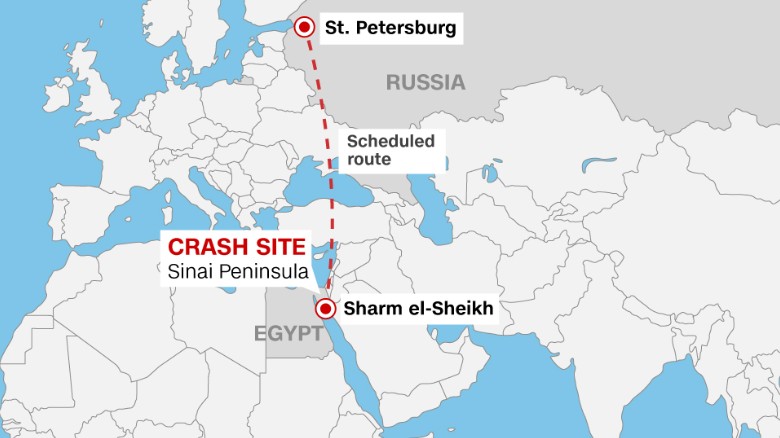
Air traffic controllers apparently didn't receive any distress calls.
"There was nothing abnormal before the plane crash," Egyptian Civil Aviation Minister Hossam Kamel said Saturday. "It suddenly disappeared from the radar."
The website Flightradar24, which tracks aircraft around the world, said it had received data from the Russian plane suggesting sharp changes in altitude and a dramatic decrease in ground speed before the signal was lost.
THE CRASH
A U.S. satellite that was over Sinai at the time of the crash detected a heat flash, according to a U.S. official directly familiar with the latest information in the investigation. U.S. intelligence and military officials are analyzing the data to determine whether the flash occurred in midair or on the ground and what that can tell them about what happened to the plane, the official said.
Analysts say heat flashes could be tied to a range of possibilities: a missile firing, a bomb blast, a malfunctioning engine exploding, a structural problem causing a fire on the plane or wreckage hitting the ground.
"The number of heat signatures is crucial," said CNN aviation analyst Miles O'Brien. "If, in fact, only one was detected, that in some respects might steer one away from a missile launch and onto some idea of an explosion onboard the aircraft."
A top Russian aviation official has said the plane broke apart in midair.
Alexander Smirnov, a Metrojet official, told reporters in Moscow on Monday the airline had ruled out technical problems and human error. Protection systems on the plane would have prevented it from crashing, he said, even if there were major errors in the pilot's control equipment.
"Therefore the only reason that could explain the plane's breaking up in the midair can be a certain impact, a purely mechanical (and/or) physical impact on (the) flying vessel," he said.
The vague comment made translation difficult, with some interpreting that the executive said an "external influence" caused the crash.
The head of the Russian Federal Air Transport Agency, however, quickly pushed back.
"It is completely premature to speak about the reasons of this, as there are not grounds. And I'd like to call on the aviation community to refrain from any premature conclusions," Transport Agency chief Alexander Neradko told the state-run Russian news agency Sputniknews.com.
Learning that the plane broke into pieces while in the air helps reduce the list of possible causes of the crash, but there are still plenty of scenarios, said CNN aviation analyst Peter Goelz.
Russian jet crash investigation -- the key question
"It narrows it down a little bit, but there are a number of issues that could have affected this plane," said Goelz, a former managing director of the U.S. National Transportation Safety Board, or NTSB. "And terrorism has not been ruled out."
He suggested the disaster could have resulted from "some sort of catastrophic failure, perhaps caused by an earlier maintenance problem. It could have been a center fuel tank that might have exploded."
Russian plane crash: Quest finds it mysterious
THE PLANE
The A321-200 was built in 1997, and the airline company Kogalymavia, which flies under the name Metrojet, had been operating it since 2012, Airbus said. The aircraft had clocked around 56,000 flight hours over the course of nearly 21,000 flights, the plane maker said.
And so far, officials have said all its inspections were in order.
The aircraft passed a routine inspection before takeoff, Egyptian Airports Co. chief Adel Al-Mahjoob said Saturday.
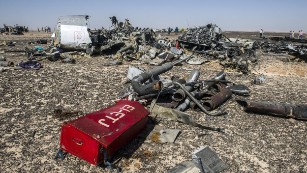
Report: Russian plane's condition concerned co-pilot 03:29
According to the Aviation Safety Network, which tracks aircraft incidents, the same plane's tail struck a runway while landing in Cairo in 2001 and required repair. At the time, the aircraft was registered to the Lebanese carrier Middle East Airlines, registration records show.
Kogalymavia's Andrei Averyanov said the plane had been damaged in 2001, but had most recently been thoroughly checked for cracks in 2013. Not enough time had passed for major cracks to develop to a critical size since then, he said.
Smirnov said that he had personally flown the plane in recent months and that it was "pristine."
THE VICTIMS
There were 217 passengers and seven crew members on board Flight 9268. Of the passengers, 209 were Russian, four were Ukrainian and one was Belarusian. The citizenships of three other passengers are unknown.
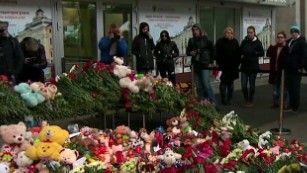
Russia mourns those lost in Egypt plane crash
Russian media reported that the disaster created a large number of orphans in Russia, as a lot of parents left their young children with relatives while they took vacations in Sharm el-Sheikh.
'Tragedy to lose so many children'
Most of the bodies retrieved at the crash site are intact, a medical source in Sinai told CNN on Monday, and showed no major burns.

The photo of 10-month-old Darina Gromova posted by the baby's mother before a family trip to Egypt.
So far, two flights carrying remains of victims have flown to Russia, according to the TASS news agency. The first flight carried 130 bodies and dozens of body fragments. It was unclear how many victims' remains were aboard the second flight, which landed in St. Petersburg early Tuesday.
THE INVESTIGATION
Egyptian President Abdel Fattah el-Sisi has promised Russian President Vladimir Putin that he will allow "the broadest possible participation of Russian experts in the investigation," according to the Kremlin, and Russian officials have joined their Egyptian counterparts at the crash scene. Putin has also ordered Russian Prime Minister Dmitry Medvedev to open an investigation, the Kremlin said.
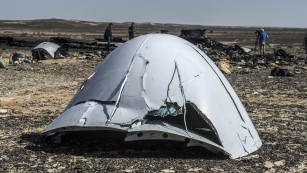
Aviation official: Russian jet disintegrated in mid-air
Aviation investigators from France and Germany, the countries where the plane was manufactured, are also taking part.
The aircraft's engines were manufactured in the United States. If the plane's engines become a focus of the investigation, the U.S. National Transportation Safety Board will likely dispatch a team to Egypt as well, a U.S official with knowledge of the investigation said.
The plane's black boxes, which were recovered at the crash site Saturday, have not yet been read or decoded, Smirnov said.
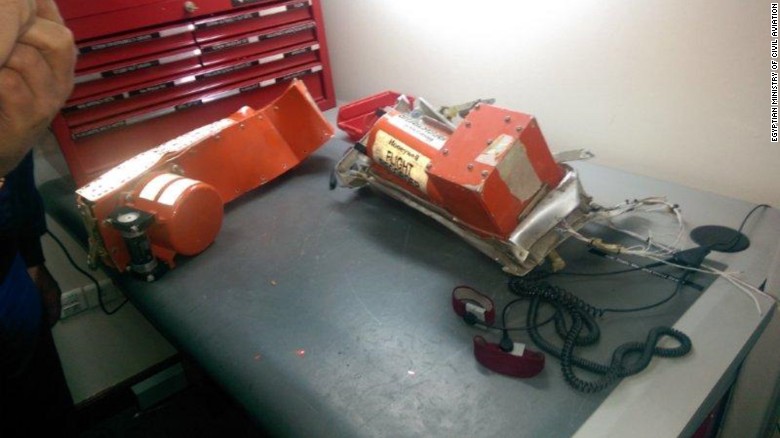
Photo released by Egypt's Ministry of Civil Aviation.
THE REGION
Sharm el-Sheikh, where Flight 9268 began its journey, is a beach resort dotted with palm trees at the southern tip of the Sinai Peninsula. The plane crashed about 300 kilometers (185 miles) farther north, near a town called Housna, according to Egyptian authorities.
The Sinai Peninsula has been a battleground between ISIS-affiliated militants and Egyptian security forces. The conflict has killed hundreds of people.
Is it safe to fly over war zones? How low can planes go?
The militants appeared to claim responsibility for bringing down the Russian passenger jet in a statement posted online Saturday, but officials in Egypt and Russia disputed it.
Russian jet crash investigation -- the key question
Mahjoob, the airport official, said there was no evidence of a terrorist attack. And Russian Transport Minister Maxim Sokolov said the claim that terrorists brought down the plane with an anti-aircraft missile "cannot be considered reliable," according to RIA Novosti.
The Egyptian military said militants in Sinai have shoulder-fired, anti-aircraft weapons that shoot only as high as 14,000 feet, far short of the more than 30,000 feet at which Flight 9268 was flying when it dropped off radar.
Kremlin spokesman Dimitry Peskov refused to discount terrorism, telling CNN's Matthew Chance on Monday that "only (the) investigation can rule out something."
Metrojet executives also said Monday that it was too early in the investigation to speculate or draw any conclusions. But Smirnov referred to purported footage of the crash posted by militants, saying: "Those images you have seen on the Internet, I think they are fake."
News Courtesy: www.cnn.com

